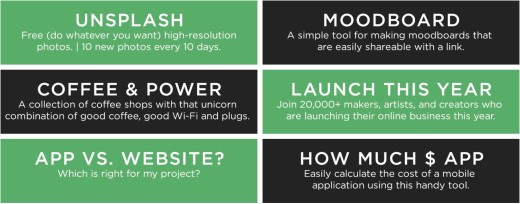
Blogging is an interesting journey. At the beginning, hitting the publish button seems to be the most difficult step. Once you are finally over it, you are likely to struggle with the next hurdle: hitting that publish button on a consistent basis.
Talking about consistency, in his 6,000th blog post last week, the legend Seth Godin reminded us once again that you can’t build authority overnight:
“Abbey Ryan has painted a new painting every day for 8 years. Isaac Asimov published 400 books, by typing every day. This is post #6000 on this blog. Writer’s block is a myth, a recent invention, a cultural malady.”
But enough with this writer’s block. What if you really need a shortcut?
What if publishing content regularly is not for you?
What if your business urgently needs quick traction in order to survive?
Advertising immediately pops up in your mind as an alternative method to buy your way through. Renting the short-term attention of your target audience by interrupting them in the middle of what they were busy doing isn’t always the best idea, however.
It turns out 95 percent of people don’t like being interrupted and the other 5 percent hate it. “We hate advertising so much, we’ve trained ourselves not to look at the top or right sidebar on most sites,” Jeffrey put it recently.
“Of course, people have been blocking ads forever. By ignoring them,” added Godin, suggesting once again that the best way to contact your users is by earning the privilege to contact them, over time.
OK, but wait:
If blogging takes ages and ads don’t work, is there an alternative that doesn’t cost money or annoy people? An alternative that brings quick traction and results?
The answer is YES. Indeed, this alternative has been bringing millions of website visitors to those who were quick enough to get the hang of it.
Welcome to the world of side project marketing, an underrated alternative between advertising and content marketing that is just starting to take over the world.

Side Project Marketing Is the New King
“We had no money. We changed our business model and had THREE months worth of cash left to turn things around. If we didn’t we were toast. Done. We needed to find customers. But no one knew who we were. A marketing budget? Please. We were just trying to keep the lights on,” starts Mikael, founder of Crew, explaining how side projects saved their startup.
They decided to give away for free all the extra photos they didn’t use that they had shot for their website redesign.
A Tumblr theme and three hours later, they launched Unsplash — a side project which not only saved their startup, but turned into a standalone product that generates a mind-blowing 11 million unique visitors/month.

“Things like blogging work but can take months before they have a big impact. Building a great product to generate word-of-mouth is a must but that takes time too,” adds Mikael.
Wait. Aren’t we supposed to do one thing and do it well? Doesn’t a side project distract us?
The interesting thing is how some side projects can be way less distracting than other marketing methods you use to create value for your business.
In other words, launching a side project may take less time and effort than writing a blog post, while returning an outcome that is equal to dozens of blog posts in most cases. More on that in a minute.
But first, we need to understand how side projects should link to our core business.
Let’s start with remembering the golden rule of online marketing, laid out by another legend, Brian Clark:
“Give Something Valuable Away in Order to Sell Something Related.”
At a glance, this rule might sound a little too honest to some people. But we need to be careful that the intention here is not to find a sneaky shortcut to make a sale.
Instead, it is to create value for others by creating tools, apps, websites, or a software — a value that is related to our core business that we build on the side without losing our main focus.
And some of those people who like what we create on the side end up willing to learn more about us, so they check out what our core business is about.
It is not a surprise that Unsplash is the number-one referral source to Crew with just a simple link back to their website on the header menu.

So, how do I launch a side project?
Let’s try to answer this question by taking a closer look at real-world examples: Crew and Buffer, two startups that absolutely nail side project marketing.
Two questions play a vital role when understanding the success that lies behind these startups:
Q1. What is their core product/business?
Q2. What kinds of problems do people who buy their product face every day? (Using the golden rule: what valuable things do Buffer and Crew give away that is related to their core product?)
Case Study #1: Crew
Q1. Crew’s core business matches people who have a project that needs high-quality creative work with a pool of handpicked freelance designers and developers.
So, they need to attract/target both sides of their marketplace: 1- Clients who have projects to be done. 2- Creatives or freelancers who will get those projects done.

Q2. What valuable things can Crew give away to help those people that are related to their core business?
When I scrolled down on their website, I found a footer section they callLabs — apparently that’s what they call their side projects.
Here are some of their side projects — six tools Crew gives away for free. Take a second to read their tag lines and you will quickly notice that each side project solves a unique problem Crew’s target audience faces:

For instance, ‘App vs. Website’ helps clients (demand side of their marketplace) understand whether they should build an app or a website for their project, while ‘Coffee & Power’ is perfect for creatives and freelancers (supply side of their marketplace) who work remotely.
ROI of these side projects? They generate over 40 percent of Crew’s revenue. They also bring over 100K email subscribers and three of these projects are among the top five referring sites to Crew.
Case Study #2: Buffer
Q1. Buffer’s core business is their social media management software that helps you to schedule posts to networks like Twitter, Facebook and LinkedIn.
So, they need to attract people who are looking to maximise their ROI from social media marketing efforts.

Q2. What valuable things does Buffer give away to help those people that is related to their core business?
Buffer has plenty of tools. Here are a few of them:

Again, these tools serve unique needs of people looking to improve the ROI from their social media activities. They drive referral traffic to Buffer’s main website while strengthening their strong brand identity.
Hey, does this mean we should stop creating value by blogging? Does advertising absolutely suck?
Of course not.
If you have an idea, you can always test it instantly with a dirty MVP landing page by purchasing clicks on Google. Or if your goal is to establish expertise in a field, consistent content publishing will give you more authority than a side project does.
The interesting thing with Buffer and Crew is that their blogs are already among the most referred and followed startup blogs.

However, there are a few reasons that explain the rise of side projects:
Higher ROI: The ROI of some side projects might blow your mind away. Game Hacks, a side project by Checkmarx, had over 35,000 players in the first 24 hours while receiving massive press coverage. Many leads attracted by this project also turned into real customers later on.
Crew launched Unsplash in three hours and it became the top referral source to their website. I launched this in less than a day, which brought me many freelance clients and over 2 million website visitors.
Yes, some side projects take less time and effort to launch than it takes to write a blog post, and make a bigger impact on the business results.
‘Should I work for free’ or ‘Daily Drop Cap’, two side projects by Jessica Hische, brought her so many clients and helped her stand out within the design community.
Tina Roth Eisenberg recently gave a talk at SXSW explaining how side projects helped her go completely clientless.
This also shows that side projects, while great for companies or startups, can also be used by freelancers, creatives, bloggers, or personal brands.

It’s easier to launch a side project than it used to be few years ago. Nowadays, there is a tool for everything and you no longer necessarily need design or coding skills to launch a quick idea on the side.
Do you want to help your customers with a free online course? There isTeachable. Want to launch a weekly digest of useful curated sources? There is Revue. A free guide or ebook? There is Gumroad. A quick website? There is Squarespace.
Just head over to ‘The 1,000 Upvote Club’ on Product Hunt and you will see that many of those most appreciated (upvoted) products are not necessarily the sophisticated software that require a huge team or coding skills.
Thanks to such community websites, it has also become much easier to distribute and let other people discover your side projects.

In our modern era of constant distraction, where people have reached a point where they are now even paying to block ads, those who create lasting value win.
Side projects help you to create value that you can’t build with a single blog post or an ad.
And it turns out side projects have a longer shelf life.
“It’s more likely you’ll use a good product many times than read a good blog post many times. This repeated usefulness is what makes software products so valuable. With a blog, you need to continually produce content at a high level and high rate to keep people coming back. This is possible, it just takes longer,” says Crew’s founder Mikael.
Side projects come with many other benefits. You can use them as a way to test new ideas instead of confusing your product offering by adding a new feature to your core product.
“Side projects are refreshing and exciting for your team: The daily slog and relentless focus on your main product can become monotonous,” says Adam, explaining how Coverr.co, a side project by Veed.me, blew up overnight, bringing them over 100K unique visitors.

From ‘Me Me Me’ Marketing to Value Creation
It is not rocket science: People don’t really care about your business unless you give them a reason to. But they start to care once you start doing the legwork that helps them or creates value.
Following Joe Chernov’s advice, this means focusing on creating awesome stuff that doesn’t even feel like marketing in the first place.
Instead of setting a selfish goal like, “We need 1000 unique visitors in 30 days,” we should ask ourselves, “How can we help 1000 people? What can we give away that is related to our core business?”
Chances are, if they like what you put out there, some of them might want to know more about your core business.
What are you selling? What do people who buy your product really need?
One of my current clients is a real estate startup that offers rentals exclusively for expatriates. As a side project, we are launching a tool that lets customers understand which neighbourhood fits best to their tastes and family. It’s a simple simulation tool that asks them questions and suggests the best neighbourhoods as a result.
Are you selling WordPress themes? What valuable things can you give away to help your customers? How about a free guide that teaches them how to set up and run a WordPress theme in 15 minutes? Or a tool that helps them understand what theme fits perfectly with their taste or goals?
With a higher ROI and repeated usefulness, side projects are here to stay. And it has never been easier to build and distribute them.
Ali Mese is one of the best-selling instructors at TNW Academy, where he teaches an online course on building a huge audience from scratch. In his practical and intense course called From 0 to 1 Million Visitors, Ali shares the best strategies and tactics he has recognized to lead to success real fast.
If you’d like to dig deeper in growing your business and wish to get more tips you’re welcome to check out my course at TNW Academy:
> Learn more about the course From 0 to Million Visitors
This post first appeared on Medium.
Get the TNW newsletter
Get the most important tech news in your inbox each week.





